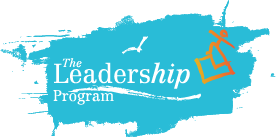Keys to Unlocking Your Inner Upstander as an Adult

Photo Credit: "you hold the key", jasleen_kaur, https://www.flickr.com/photos/jasleen_kaur/
While educators focus on bullying prevention, the entire popution is being confronted daily by bullying and supporters of bullying in the media. Whichever media format you use to stay up-to-date on current events, you can’t escape reading, witnessing, or hearing behavior from an adult in the public eye that we would not accept from a middle school bully.
It’s easy to see this behavior in someone else. We marvel at other people’s lack of self-awareness. The bullying and bystander behavior is so obvious! The bully urges harassment or worse, attacks, and the bystanders and supporters of the bully rise to the bait, chanting, revving themselves up, and occasionally even throwing punches.
But what about our own behavior? Are we as self-aware as we want others to be? We may not be hitting anyone, but are we responding as Upstanders? Do we openly denounce the bullying? Do we come to the defense of those who have been harassed so that we don’t leave them to suffer alone (or worse, add to their anguish)?
If we don’t ask ourselves these questions, how can we ask of our children to self-reflect?
Self-reflection is what we are asking when we pose that ubiquitous post-incident question: “What were you thinking?” Whether we ask it in a punitive you’ve-done-something-wrong-and-now-you’re-in-trouble! tone, or as a genuine attempt to understand what motivated a not-such-a-good-idea choice, we are asking a child to reflect on his or her own actions.
In order to make it safe to self-reflect, to take responsibility for one’s actions, we as adults have to show children how to do that. We have to take the risk of taking a public stand for what we know is right, of apologizing for our previous oversights, and of making thoughtful choices in response to others’ unacceptable behavior. To create a framework that supports Upstander behavior we can use a few self-reflection guidelines to bolster our efforts:
- Live Your Values. Think about the values you stand for and want to uphold in your interactions. Maybe they include integrity, honesty, loyalty, and courage. How are your responses to bullying situations living up to these values?
- Have Humility. Reflect on your own motivation: are you trying to look like a hero or truly trying to intervene for someone who needs help?
- Put Safety First. Consider whether your response will put you or anyone else in danger before you take action. Keep in mind both short- and long-term repercussions.
- Craft a Paradigm. If you imagine yourself in the future looking back at your choice, does it hold up as Upstander behavior? Is it effective? Are you setting a standard that is worthy of being a lasting model for Upstanders? That will help youth make safe and effective choices as they develop their own Upstander skills?
Without self-reflection we are reactive, rather than responsive. It is up to us as Upstanders to continually assess our own actions as an essential aspect of modeling Upstander behavior.
Tell us your Upstander successes and struggles in the comments below, or Tweet to @leadershippin —we’d love to celebrate your successes and support your struggles!
“Keys to Unlocking Your Inner Upstander as an Adult”, The Leadership Program, Inc. 2016


Comments [0]
Click here to read/write comments